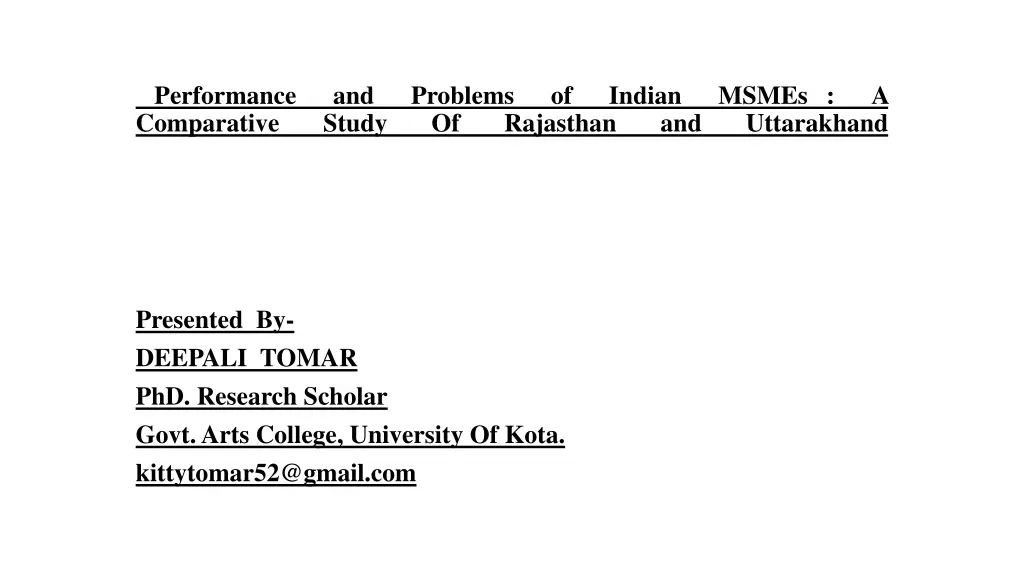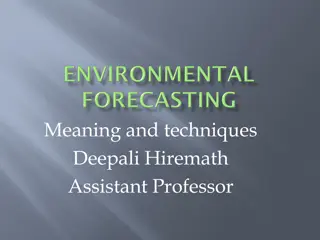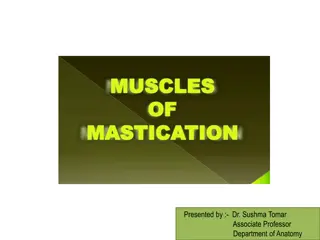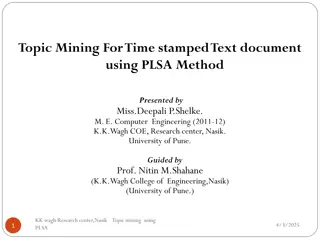
Comparative Study of MSMEs in Rajasthan and Uttarakhand
Explore the performance and challenges of MSMEs in Rajasthan and Uttarakhand, focusing on issues like raw material access, financing, skills development, and marketing strategies. Recommendations will be provided to enhance the strength of MSMEs in these regions.
Download Presentation

Please find below an Image/Link to download the presentation.
The content on the website is provided AS IS for your information and personal use only. It may not be sold, licensed, or shared on other websites without obtaining consent from the author. If you encounter any issues during the download, it is possible that the publisher has removed the file from their server.
You are allowed to download the files provided on this website for personal or commercial use, subject to the condition that they are used lawfully. All files are the property of their respective owners.
The content on the website is provided AS IS for your information and personal use only. It may not be sold, licensed, or shared on other websites without obtaining consent from the author.
E N D
Presentation Transcript
Performance Comparative and Study Problems Of of Indian MSMEs : Uttarakhand A Rajasthan and Presented By- DEEPALI TOMAR PhD. Research Scholar Govt.Arts College, University Of Kota. kittytomar52@gmail.com
Introduction The MSME sector is a bunch of entrepreneurship, often driven by individual, Micro and medium enterprises. Hindu undivided family, small firm etc. large employment opportunities at lower capital cost. help in industrialization of rural & backward areas. India has nearly 467.56 Lakhs SMEs, which account for almost 40 percent industrial output, 42 percent of India s total export and more than 7 % of Gross domestic product (GDP). MSME constitute the most important employment generating sector for both self- employment and jobs after agriculture sector. And it also works as an effective tool for balanced regional development. They account for 50 percent of private sector employment and 30-40 percent of value addition in manufacturing. They produce a diverse range of products (about 8000) including consumer items, capital and intermediate goods.
Existing and Revised Definition of MSMEs Existing MSME Classification Criteria : Investment in Plant & Machinery or Equipment Micro Classification Small Medium Mfg. Enterprises Investment<Rs. 25 lac Investment<Rs. 5 cr. Investment <Rs. 10 cr. Services Enterprise Investment<Rs. 10 lac Investment< Rs. 2 cr. Investment<Rs. 5 cr. Revised MSME Classification Composite Criteria : Investment And Annual Turnover Classification Micro Small Medium Investment< Rs. 1 cr. and Turnover < Rs.5 cr. Investment< Rs. 10 cr. and Turnover < Rs.50 cr. Investment< Rs. 20 cr. and Turnover < Rs.100 cr. Manufacturing & Services
Businesses including MSMEs 1. Rs 3 lakh crores Collateral freeAutomatic Loans for Business, incl MSME Rs 20,000 crore Subordinate Debt for MSMEs Rs 50,000 cr equity infusion through MSME Fund of Funds New definition of MSMEs Global tenderto be disallowed upto Rs 200 crores Otherinterventions for MSMEs Rs 2500 crores EPFsupport for Businesses and Workers for 3 more months EPFcontribution reduced for Business & Workers for 3 months- Rs 6750 crores 9. Rs 30,000 crores Liquidity Facility for NBFC/HCs/MFIs 10. Rs 45,000 cr Partial Credit Guarantee Scheme 2.0 forNBFC 11. Rs 90,000 cr Liquidity Injection for DISCOMs 12. Relief to contractors 13. Extension of Registration and Completion Date of Real Estate Projects under RERA 14. Rs 50,000 cr liquidity through TDS/TCS reductions 15. Other Direct tax Measures 16. Other Direct Tax Measures 2. 3. 4. 5. 6. 7. 8.
Objectives To analyse performance and problems of indian MSMEs in Rajasthan and Uttarakhand. To examine problems faced by MSME s in respect of availability of raw materials, finance, skill-promotion and capacity-building, labour and marketing strategies. To suggest appropriate guidelines for strengthening the MSME s .
Research Methodology- Sample and Data Type The study area selected to accomplish the objectives of the paper is Rajasthan and Uttarakhand States. Sample and Data Type In this study we have used secondary data due to time limitation from different sources. Descriptive in nature Quantitative study. Sources of Data Industries Department Uttarakhand National sample survey organization PHD Chamber of commerce and industry Confederation of Indian Industry KVIC reports Directorate Of Industries
. Number of MSME's Registered in Rajasthan and Uttarakhand 180000 160000 140000 120000 100000 80000 60000 40000 20000 0 2015-16 2016-17 2017-18 2018-19 2019-20 2020-21 Micro Rajasthan Micro Uttarakhand Small Raajasthan Small Uttarakhand Medium Rajasthan Medium Uttarakhand
Total Employment in MSME in Rajasthan and Uttarakhand . 600000 500000 400000 300000 200000 100000 0 2015-16 2016-17 2017-18 2018-19 2019-20 2020-21 Micro Rajasthan Micro Uttarakhand Small Raajasthan Small Uttarakhand Medium Rajasthan Medium Uttarakhand
Male Registration in MSME in Rajasthan and Uttarakhand . 140000 120000 100000 80000 60000 40000 20000 0 2015-16 2016-17 2017-18 2018-19 2019-20 2020-21 Micro Rajasthan Male Micro Uttarakhand Male Small Rajasthan Male Small Uttarakhand Male Medium Rajasthan Male Medium Uttarakhand Male
Female Registration in MSME in Rajasthan and Uttarakhand . 25000 20000 15000 10000 5000 0 2015-16 2016-17 2017-18 2018-19 2019-20 2020-21 Micro Rajasthan Female Micro Uttarakhand Female Small Rajasthan Female Small Uttarakhand Female Medium Rajasthan Female Medium Uttarakhand Female
Problems faced by MSMEs in Rajasthan and Uttarakhand There is a problem of effective marketing and selling in the state due to uneven geographical factors. Inadequate Infrastructure Lower technology levels The industries are heavily weighed down by the rules and regulation imposed on them. investment in the khadi and village sector Shortage of energy leading to high energy cost is also an issue. Problems of storage, designing, packaging and product display Youth of the state lacks in proper skill development and training. Lack of proper research and development is also an issue.
CONCLUSION MSME s are termed as the engine of economic growth of any country both developed and developing but specially developing countries. It s the panacea to alleviate poverty and also a proven way to improve the quality of life particularly for the poor people. MSME s have the potential to act as catalysts of growth and thus curb this societal crisis. From the study it is observed that COVID-19 has seriously affected the MSME sector in both the states as there was a sharp decline in number of MSME units registered, employment and gender-wise participation. The State should strive for MSME s penetration across all the thirteen districts to ensure an overall development of the state.
Recommendations 1.Availability of Data There is no data which shows the percentage contribution of tourism on MSMEs, it should be made available Data should be made available for the revenue generated from tourism. 2. Infrastructural development Investments in tourism infrastructure may include development of both tourism as well as civic infrastructure. Also involves provision of tourist information bureaus and websites for providing requisite tourist information. There is less number of beds per million people. Steps should be taken to increase and improve accommodation facilities. . 13
3. Human resource development Provision of additional training institutes, enhancing capacity of existing ones along with introduction of short term courses providing specific skills directed at hospitality and travel trade sector employees may be required for catering to the increased manpower and skill requirements. Rural youth may be provided vocational training through special institutes to provide them employment opportunities. 4. Marketing programs Collaborative marketing efforts may be required for promotions. Focused branding and promotional campaigns may be designed. Involvement of local travel trade partners may be encouraged. Trips to involved destinations, informative sessions, financial support and incentives may be provided. . 14
References Report. (1988). National Committee on Tourism. Naik, S. (1991). Hotels and Tourism Belied expectations missed. The Economic Times , p.9. Ghosh. (1998). Tourism and Travel Management. Publishing House Pvt. Ltd. Lloyd. (1964). The Economic Development of Tourist Industry in New Zealand. Wellington, New Zealand MSMEs in India. (2012). Indore: SME cluster series. Report. (1985). Canadian national task force on tourism Data. Report. (2013). Parliament Library And Reference, Research, Documentation And Information Service (LARRDIS) Post Floods. (2013). Emergency Market Mapping Analysis. Inclusive growth in hilly regions: Priorities for the Uttarakhand Economy (KAR). (n.d.). Uttarakhand At a Glance. (2012). Dehradun: Directorate of Economics and Statistics. Statistical Handbook. (2015). Retrieved June 18, 2015, from http://uttarkashi.nic.in/pages/view/18-statistical-handbook Kumar, J. (2014, November 16). MSMEs will boost tourism: Trade.Deccan Chronicle, p. 1. Retrieved June 1, 2015, from http://www.deccanchronicle.com/141116/nation- current-affairs/article/msmes-will-boost-tourism-trade Uttarakhand Industrial Profiles. (n.d.). Retrieved June 1, 2015, from http://dcmsme.gov.in/dips/U.K_dipr.html Sanjeevan, G. (2012). Present Status of MSME Statistics. The Journal of Industrial Statistics, 1(2), 269-282. doi:2012 Emerging Contours in the MSME Sector of Uttarakhand. (2014, April 1). Retrieved June 1, 2015, from http://phdcci.in/file/thematic_pdf/MSMEs%20Uttarakhand_6%20April%202014_%20final%20h.pdf Uttarakhand Annual Plan. (2013). Retrieved June 1, 2015, from http://planningcommission.nic.in/plans/stateplan/Presentations13_14/uttarakhand_2013_14.pdf Study Report onIdentifying Specific Requirements for Strengthening of State Statistical Bureaus Uttarakhand. (2008, April 25). Retrieved June 1, 2015, from http://mospi.nic.in/Mospi_New/upload/uttaranchal_25apr08.pdf . 15







